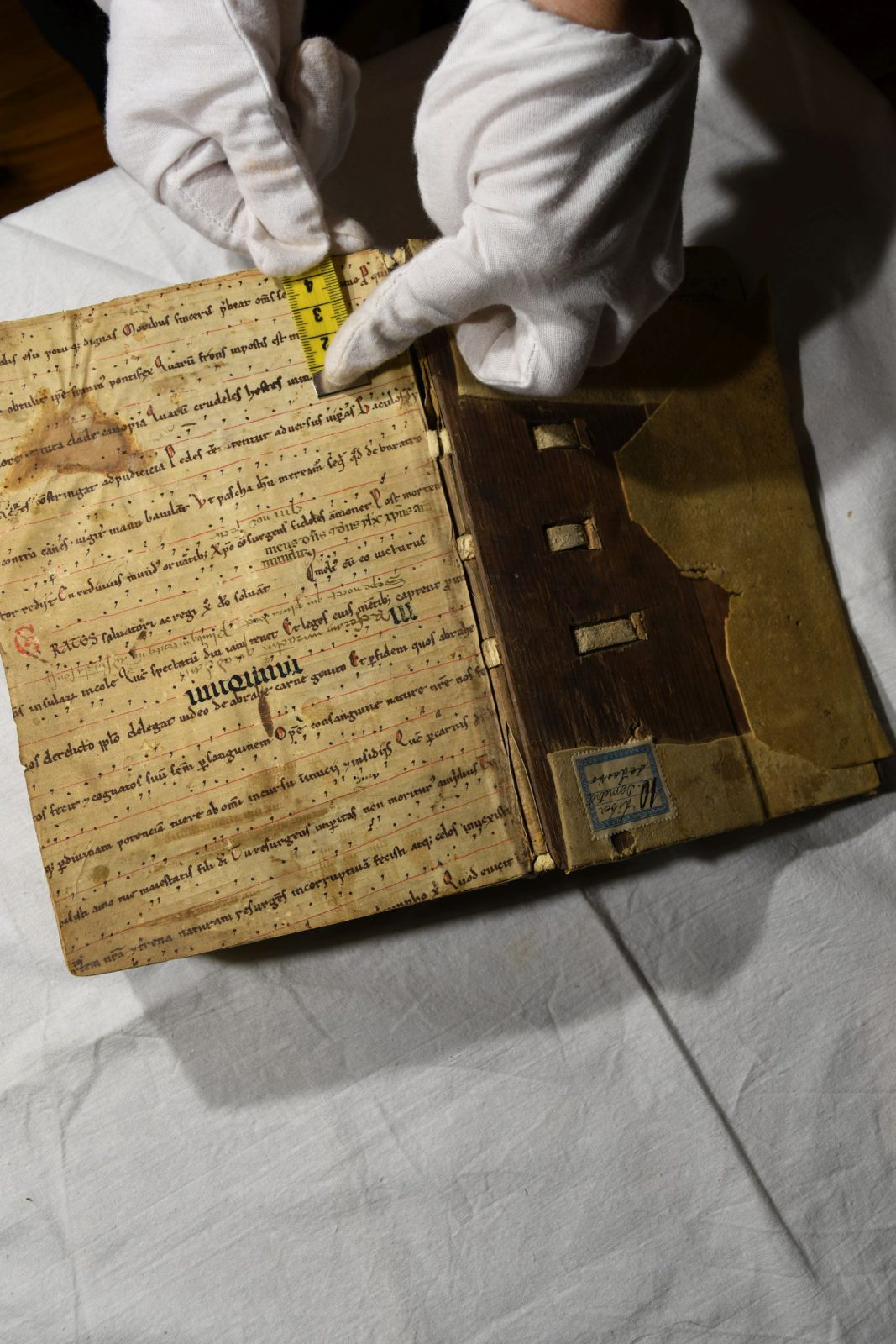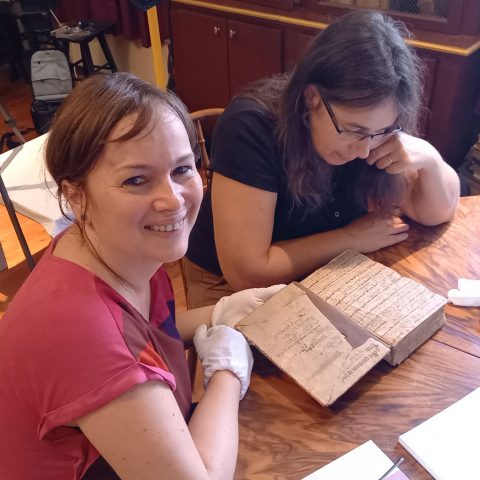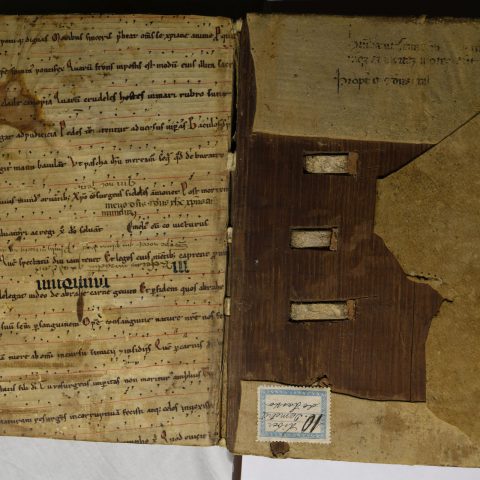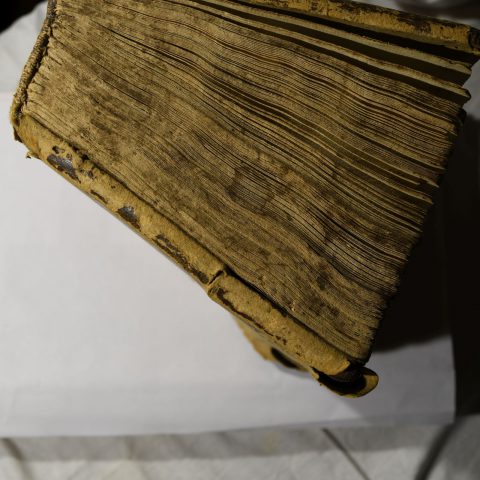Through the kind intervention of our colleague, Gábriel Szoliva OFM, two members of our research group, Gabriella Gilányi and Zsuzsa Czagány, were able to visit the convent of the Friars Minor Conventual in Šibenik (Samostan Sv. Frane) on 20 September 2021, where, with the kind permission of Fra Ivan, the convent’s librarian, they could study the so-called Liber Demetrii de Lasko written in the 1430s. The manuscript, a compositum of treatises was presumably written down in the school of the Benedictine monastery of Pécsvárad in the first half of the 1430s and then bound together in a book. It has been well known to Hungarian cultural, book and literary historians since the 1980s. Its folio 16 recto contains a five-line prayer in Hungarian. It is less well known that both flyleaves in the front and back were made from parchment coming from a 12th-century notated liturgical manuscript. These parchment leaves preserve one of the earliest examples of medieval Hungarian (Esztergom) music notation. The work of the research group was greatly assisted by Zsolt Kemecsei, who not only digitized the entire manuscript on site, but – using special technical-photographic equipment, ultraviolet and piercing light – also made visible the lines, textual and musical entries in the main text and on the fragmentary pages, which were previously thought to be illegible and lost. The study of the complete material of the two musical codex fragments, unique both in terms of their palaeographical and liturgical-musical content, may shed new light on, or at least significantly nuance, the scholarly opinion of the earliest period of Hungarian musical script.
An analytical description of the notated fragments is presented on the website http://fragmenta.zti.hu/ (F 990). A more comprehensive study of the Liber Demetrii de Lasko and the fragments preserved in it written by Zsuzsa Czagány and Gabriella Gilányi was published in the journal Magyar Zene 60, 2022/1, 5–32.





